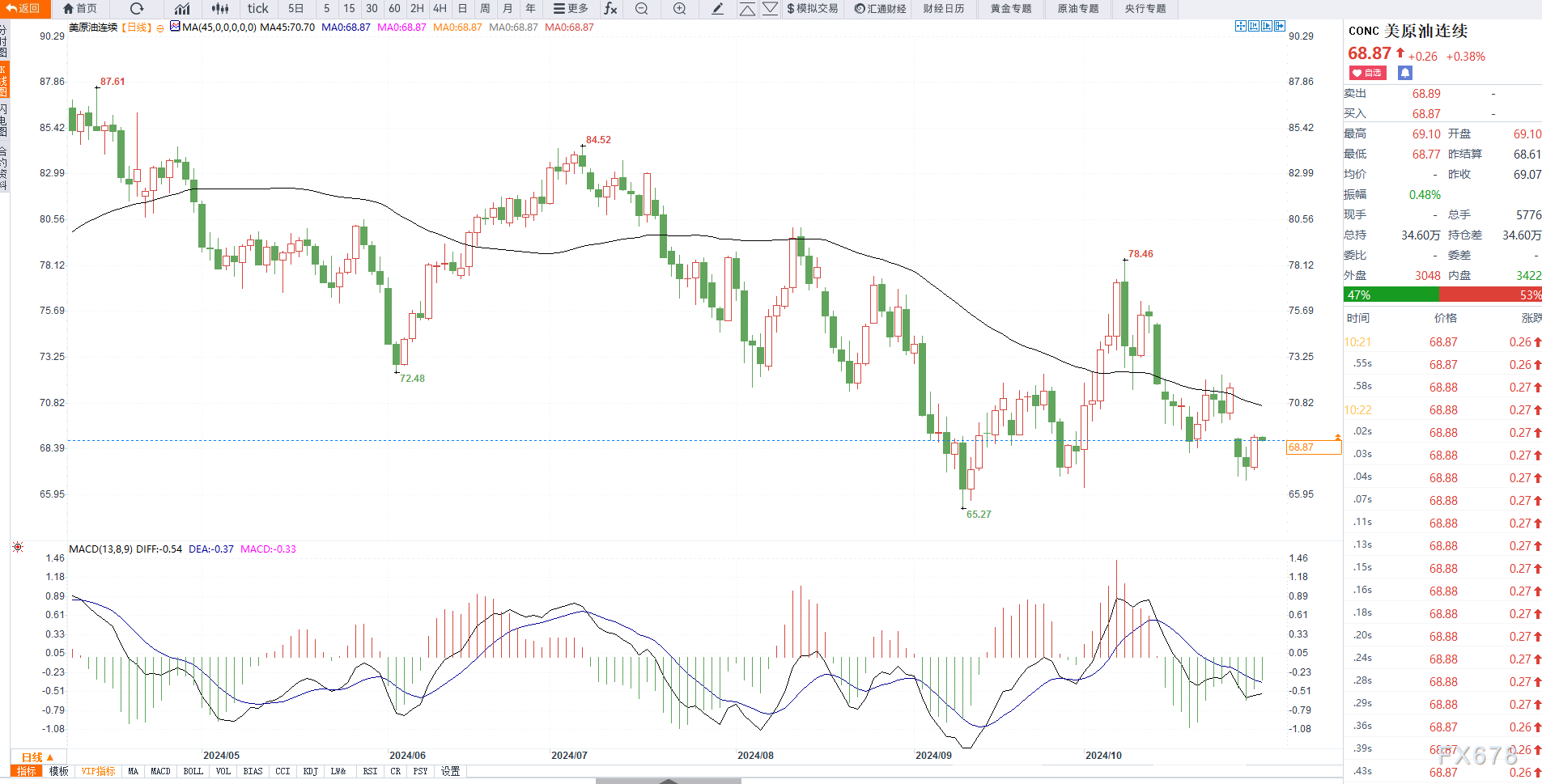Two major bullish factors boost bulls, while US crude oil rebounds fiercely
On Thursday, October 31st, during the Asian trading session, US crude oil continued its upward trend, mainly due to an unexpected decrease in US crude oil inventories. Gasoline inventories fell to a two-year low and were significantly lower than before. At the same time, there were reports that OPEC+may delay oil production plans, which to some extent supported the strengthening of oil prices. The unexpected decline in gasoline inventories hinted at potential demand growth expectations, and the possibility of oil prices continuing to rise cannot be ruled out.
We need to pay attention to the number of initial jobless claims in the United States and the annual rate of the core PCE price index in September to see if they will continue to boost oil prices.
OPEC+may delay oil production increase plan originally scheduled for December
Three sources said that OPEC+may postpone the oil production increase plan originally scheduled to take effect in December by one month or more, citing concerns about weak oil demand and increased supply.
The plan for the eight member countries of OPEC+to increase production by 180000 barrels per day has been postponed from October to December. But oil prices are still under pressure, partly due to weak demand data, which has raised concerns among OPEC+member countries about increasing supply.
Two sources said that the decision to postpone production increase could be made as early as next week. One of the sources said, 'The production increase in December may be postponed because the market is not yet healthy enough.' The prospect of OPEC+further delaying production increased oil prices by 2% on Wednesday. Nevertheless, Brent crude oil is still around $72 per barrel, almost the same as the annual low reached in September.
OPEC and the Saudi government's communication office did not immediately respond to requests for comment.
Two sources familiar with OPEC+negotiations said that the production increase in December may be delayed by at least one month, while the third source is a representative of OPEC+and did not specify a specific time frame.
OPEC+plans to increase production by 180000 barrels per day, which is only a small part of OPEC+'s reduction of 5.86 million barrels per day to support the market. The total reduction in production is equivalent to about 5.7% of global demand.
The reason for the significant reduction in production at that time was the uncertainty of demand prospects and the increase in supply outside the alliance. The production increase in December will come from the eight member countries of OPEC+, which agreed in September to gradually lift the alliance's final decision to reduce production by 2.2 million barrels per day from December 2024 to next year.
The previously decided production reduction plan of 3.66 million barrels per day will be maintained until the end of 2025. The ministers of OPEC+will hold a policy decision plenary meeting on December 1st.
Unexpected decline in US crude oil and gasoline inventories
EIA data shows that domestic crude oil production in the United States remained at 13.5 million barrels per day for the week of October 25, 2024. On the week of October 25, 2024, US crude oil exports increased by 149000 barrels per day to 4.261 million barrels per day.
Excluding strategic reserves, commercial crude oil inventories decreased by 515000 barrels to 426 million barrels, a decrease of 0.12%.
The average supply of crude oil products in the United States over the past four weeks was 20.943 million barrels per day, a year-on-year increase of 2.74%. On the week of October 25, 2024, the US Strategic Petroleum Reserve (SPR) inventory increased by 1.189 million barrels to 385.8 million barrels, a growth of 0.31%.
On October 25, 2024, the United States imported 5.975 million barrels per day of commercial crude oil excluding strategic reserves, a decrease of 456000 barrels per day from the previous week.
The US economy experienced strong growth in the third quarter, benefiting from business and household consumption
On October 30th, the US economy showed strong growth momentum in the third quarter, despite the challenges facing the global economy and the uncertainty of the November election, household and business consumption remained stable.
The latest released data shows that the initial annualized quarterly rate of real GDP in the third quarter of the United States increased by 2.8%, slightly lower than the previous quarter's 3%. Consumer spending, as the main component of economic activity, increased by 3.7%, the highest growth rate since early 2023.
Meanwhile, according to data from the US Bureau of Economic Analysis, the initial annualized quarterly rate of the core PCE price index rose by 2.2% in the third quarter, which is basically in line with the Federal Reserve's expected target.

Daily chart of US crude oil
Tips:This page came from Internet, which is not standing for FXCUE opinions of this website.
Statement:Contact us if the content violates the law or your rights
